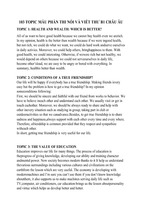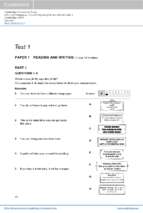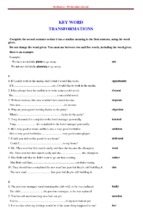“VIETNAM NATIONAL UNIVERSITY, HANOI”
“VIETNAM JAPAN UNIVERSITY”
-------------------------------
“HOANG DUC TRUNG”
RELATIONSHIP BETWEEN
ROLE MODELS AND
ENTREPRENEURIAL INTENTIONS
“MASTER’S THESIS”
“BUSINESS ADMINISTRATION”
“Hanoi, 2020”
“VIETNAM NATIONAL UNIVERSITY, HANOI
VIETNAM JAPAN UNIVERSITY”
-------------------------------
“HOANG DUC TRUNG”
RELATIONSHIP BETWEEN
“ROLE MODELS AND”
“ENTREPRENEURIAL INTENTIONS”
“MAJOR: BUSINESS ADMINISTRATION”
“CODE: 8340101.1”
“RESEARCH SUPERVISORS:”
“Assoc. Prof. Dr. VU ANH DUNG”
“Assoc. Prof. Dr. KODO YOKOZAWA”
“Hanoi, 2020”
TABLE OF CONTENTS
ACKNOWLEDGEMENT
ABSTRACT
ABBREVIATION
LIST OF TABLES
LIST OF FIGURES
CHAPTER 1: INTRODUCTION ................................................................... 1
1.1
Research background ..................................................................................1
1.1.1
Practical motivation ................................................................................1
1.1.2
Theoretical motivation ............................................................................2
1.2
Subject and scope of research .....................................................................3
1.2.1
Subject of research ..................................................................................3
1.2.2
Scope of research ....................................................................................3
1.3
Research objective ...................................................................................... 3
CHAPTER 2: LITERATURE REVIEW ........................................................ 4
2.1
Theoretical background...............................................................................4
2.1.1
Entrepreneurship ..................................................................................... 4
2.1.2
Entrepreneurial intention ........................................................................5
2.1.3
Entrepreneurial Self-efficacy ..................................................................6
2.1.4
Role model .............................................................................................. 7
2.2
Previous related research ............................................................................8
2.2.1
Mediating role of ESE ............................................................................8
2.2.2
Moderators of role models’ impact on ESE ...........................................9
i
2.3
Research gap ............................................................................................. 11
2.4
Research questions .................................................................................... 12
2.5
Hypotheses ................................................................................................ 12
2.6
Research model ......................................................................................... 14
CHAPTER 3: RESEARCH METHODOLOGY .......................................... 16
3.1
Procedure...................................................................................................16
3.2
Data collection .......................................................................................... 17
3.3
Measurements ........................................................................................... 17
CHAPTER 4: DATA ANALYSIS ............................................................... 19
4.1
Descriptive statistics .................................................................................19
4.2
Analysis .....................................................................................................19
4.2.1
Reliability test ....................................................................................... 19
4.2.2
Exploratory factor analysis ...................................................................20
4.2.3
Regression ............................................................................................. 23
CHAPTER 5: DISCUSSION ........................................................................ 28
5.1
Discussion .................................................................................................28
5.2
Theoretical and practical implications ...................................................... 30
5.2.1
Theoretical implications .......................................................................30
5.2.2
Practical implications ............................................................................31
5.3
Limitations and directions for future researches .......................................32
REFERENCES. ............................................................................................... 33
ii
ACKNOWLEDGEMENT
I would like to express my sincere gratitude to my supervisors – Associate Prof. Dr.
Vu Anh Dung and Associate. Prof. Dr. Kodo Yokozawa for generous and careful
guidance.
I would also like to thank Mr. Nguyen Anh Hao and Ms. Pham Thi Xuan Thoa for
their enthusiastic support during my research.
A very special thanks go to MBA program’s teachers and staff, my friends, and my
family for great companion and encouragement.
iii
ABSTRACT
A considerable amount of studies on the influence of role models on entrepreneurial
intentions have been conducted. However, the specific mechanism by which role
models exercise such influence is not yet fully discovered. This paper attempts to
explore such mechanism, with the possible mediating effect from entrepreneurial
self-efficacy, and expected moderating effect from perceived similarity and previous
entrepreneurial experience. The author used quantitative method with a sample of
205 undergraduate business-majored students of Foreign Trade University in
Vietnam. The results show that role models positively impact students’
entrepreneurial intentions, both directly and indirectly via the mediator which is
entrepreneurial self-efficacy. Contrary to the expectations, perceived similarity and
previous entrepreneurial experience appear to have no significant moderating impact
on how role models alter respondents’ self-evaluation of their business-related
competency. This research contributes to the literatures regarding antecedents of
entrepreneurial intentions, backing up the idea that entrepreneurial self-efficacy could
be an efficient mediating variable in models related to entrepreneurial intentions.
Keywords: entrepreneurial intentions, role models, entrepreneurial self-efficacy,
perceived similarity, previous entrepreneurial experience
iv
ABBREVIATION
EI
Entrepreneurial Intention
ESE
Entrepreneurial Self-efficacy
PEE
Previous Entrepreneurial Experience
PS
Perceived Similarity
RM
Role Model
v
“LIST OF TABLES”
Table 2.1: Previous researches related to mediating role of ESE ............................... 9
Table 4.1: Cronbach’s Alpha Test results .................................................................20
Table 4.2: KMO and Barlett’s Test results ............................................................... 20
Table 4.3: Total Variance Explained ........................................................................21
Table 4.4: Rotated Component Matrix .....................................................................21
Table 4.5: Correlations .............................................................................................. 22
Table 4.6: Result of hypothesis testing .....................................................................27
vi
“LIST OF FIGURES”
Figure 1.1: Entrepreneurial Intention Rates in 2017 ...................................................2
Figure 2.1: Theory of Planned Behavior .....................................................................5
Figure 2.2: Entrepreneurial Intention Model .............................................................. 6
Figure 2.3: Determinants of ESE ................................................................................7
Figure 2.4: Proposed research framework ................................................................ 14
Figure 3.1: Mediation analysis by PROCESS Macro ...............................................16
Figure 4.1: Gender ratio ............................................................................................ 19
Figure 4.2: Model of mediating effect ......................................................................23
Figure 4.3: RM’s impact over ESE ...........................................................................24
Figure 4.4: RM and ESE’s impacts over EI .............................................................. 24
Figure 4.5: RM’s total, direct, and indirect impact over EI ......................................25
Figure 4.6: Result for model of mediating effect ...................................................... 25
Figure 4.7: Moderate effect of PS .............................................................................26
Figure 4.8: Moderating effect of PEE .......................................................................26
Figure 4.9: Result for both mediating and moderating effect ...................................27
Figure 5.1: Role Models’ impact on individual’s ESE in relation with amount of time
working together .......................................................................................................30
Figure 5.2: Role Models’ impact on individual’s EDE in relation with Role Models’
successfulness ...........................................................................................................30
vii
CHAPTER 1: INTRODUCTION
1.1 Research background
1.1.1 Practical motivation
Entrepreneurship is important to the growth of society in the sense that it helps to
create jobs and promote innovation (Shane & Venkataraman, 2000). Sobel and King
(2008) have also shown that entrepreneurship rate is directly proportional to
economic growth rate. Since the turning of the century, entrepreneurship has proved
to be one of the stabilizer of economies’ financial states (Bohlmann, Rauch, & Zacher,
2017).
Not only influential in terms of finance or economics, entrepreneurship in general,
and one of its branches called social entrepreneurship in particular, contribute greatly
to social wellbeing by mobilizing social resources to resolve social issues (Beckmann,
2012).
Acknowledging that entrepreneurship would be a crucial engine driving the country
forwards, Vietnam has applied various policies and initiatives to promote
entrepreneurial spirit, especially among younger generations (Nguyen & Gillian,
2016). However, despite the efforts, it appears that entrepreneurship movement in
Vietnam is not yet as strong as it is expected to be.
As can be observed from the above Figure 1.1 below, Vietnam’s Entrepreneurial
Intention Rate is lower than the average rate of Asia Pacific Region and rates of
several neighbor countries. Considering that entrepreneurship is one of the top
development priorities of Vietnam, as reflected in the Government’s Initiative for
Startup Ecosystem called National Program 844, the current rate of Entrepreneurial
Intention is not up to the ambition of a so-called startup nation.
To be specific, in 2017, Global Entrepreneurship Monitor evaluated Entrepreneurial
Intention Rates, calculated as “percentage of population aged 18-64 who intend to
1
start a business within 3 years from the time of survey”. According to the findings
Vietnam’s rate (25%) was lower than the average rate of Asia Pacific Region (26.2%),
and also lower and those rates of neighbor countries such as Indonesia (28.1%) and
Thailand (37.4%) (GEM Global Entrepreneurship Monitor, 2017).
%
40
37.4
35
28.1
30
26.2
25
25
20
17.6
15
10
5
0
Vietnam
Indonesia
Thailand
Malaysia
Asia Pacific
Region
Figure 1.1: Entrepreneurial Intention Rates in 2017
Source: GEM Global Entrepreneurship Monitor (2017)
Therefore, there should be more measures to boost Vietnamese people’s eagerness to
open new businesses, especially among younger generations. Regarding this matter,
one potential source of entrepreneurial motivation may come from role models. Van
Trang, Do, and Luong (2019) shows that those who have entrepreneurial role models
would be significantly more confident in their start-up ability. That is to say, further
exploration of such correlation could be beneficial for stronger promotion of
entrepreneurship in Vietnam.
1.1.2 Theoretical motivation
Entrepreneurial intention has been vastly researched over the last few decades
(Bandura, 1986; BarNir, Watson, & Hutchins, 2011; Bohlmann, Rauch, & Zacher,
2
2017; Bosma, Hessels, Schutjens, Praag, & Verheul, 2012; Brunel, Laviolette, &
Radu-Lefebvre, 2017; Farrukh, Alzubi, Shahzad, Waheed, & Kanwal, 2018; Krueger,
Reilly, & Carsrud, 2000; etc.)
Trying to explore what is the origin of entrepreneurial intention, or what factors are
able to ignite the desire of becoming business owners within individuals, many
researches have identified role model as a notable determinants (Shapero, 1982;
Bosma et al., 2012).
Even though widely recognized as having influence over entrepreneurial intention,
the mechanism by which role model exercises such influence is not yet fully
understood, for example, whether the impact can be delivered directly, or must be
channelled through a mediating factor (Krueger, Reilly, & Carsrud, 2000), or what
kind of forces would moderate the impact process (Bosma et al., 2012). As such, this
study aims to provide an answers, among many others, to the aforementioned
questions.
1.2 Subject and scope of research
1.2.1 Subject of research
The research subject is entrepreneurial intention of undergraduate business-majored
students in Hanoi.
1.2.2 Scope of research
The data is collected from Foreign Trade University between 6/4/200 and 10/4/2020.
1.3 Research objective
The study aims to explore by what mechanism role models could exert their influence
on Vietnamese business-majored undergraduate students’ entrepreneurial intentions.
3
CHAPTER 2: LITERATURE REVIEW
2.1 Theoretical background
2.1.1 Entrepreneurship
Entrepreneurship could be defined as the process by which individuals or groups
utilizing resources such as finance, labor, and even risk, to create new goods or
services (Kearney, Hisrich, & Roche, 2010). According to Shane and Venkataraman
(2000), entrepreneurship involves three main contents: the origin of entrepreneurial
opportunities; the processes by which the aforementioned opportunities are
discovered, evaluated, and exploited; and the people who carry out all the said actions.
Also taking opportunities as the focal point of entrepreneurship, Venkataraman
(2019) points out that the differences among individual, especially differences in
‘possession of useful knowledge’, make each person to have unique pespective of
what can be considered as enterprising opportunities and what are not, thus their
subsequent methods of exploiting such opportunities would also vary.
Even though still recognizing the role of opportunities when it comes to studying
about entrepreneurship, Friedman and Aziz (2012) incline towards defining
entrepreneurship as the action of initiating new corporates or renew existing ones.
Those who conduct the aforementioned entrepreneurship activities are entrepreneurs.
There are also a wide range of perspectives regarding what constitute an entrepreneur.
Cunningham and Lischeron (1991) present six approaches for describing
entrepreneurship, one of which is that “entrepreneurs are those who organize, own,
manage, and assume the risk, and their core behavior is innovation”. Partly sharing
the sentiment regarding the innovation aspect, Schumpeter (1965) defines
entrepreneurs as those who, with the tools of technical and/or organizational
innovation, capitalize opportunities available in the market.
4
However, despite numerous conducted studies on entrepreneurship, people’s
understanding on how entrepreneurship is originated, or what factors contribute to
individuals’ decision to start business, or to become entrepreneur, remains relatively
underdeveloped (Markman, Balkin, & Baron, 2002).
2.1.2 Entrepreneurial intention
From a certain perspective, entrepreneurship is considered a planned behavior (Katz
& Gartner, 1988). Krueger et al., (2000) states that “entrepreneurial intention is the
subjective thinking and mental state of entrepreneurs before they implement
entrepreneurial behavior”. Understanding such preceding thoughts and notions would
give a clearer view over the intended behavior called as entrepreneurship.
There are various factors affecting entrepreneurial intention, which may come from
external environment like opinions of surrounding society regarding entrepreneurship
(Meek, Pacheco, & York, 2010), or elements existing within individuals such as
talents, habits, desires, or perception of values (Lee & Wong, 2004). Similarly,
perception of social support, structural support, family support, or other related
perceptions, can be considered as internal and cognitive antecedents (Ajzen ,1991).
There have been several intention models put forward by researchers, of which the
most widely used is Theory of Planned Behavior (TPB) by Ajzen (1991).
Figure 2.1: Theory of Planned Behavior
Source: Ajzen (1991)
5
TPB suggests three antecedents for intention. The first one – “attitude towards the
behavior” - is built upon the expectations about how the outcome of the behavior
would effect individual who carries out the behavior. Next, “subjective norms” refer
to how related people think about that individual’s conducting a certain actions.
Lastly, “perceived behavioral control” reflects how that individual think about the
feasibility of performing the behavior (Krueger, Reilly, & Carsrud, 2000).
Based on TPB model, several intention models specifically applied for the field of
entrepreneurship have been developed. Below is one example among those.
Figure 2.2: Entrepreneurial Intention Model
Source: Liñán (2004)
Adapting from TPB model’s “perceived behavioral control” variable, Liñán’s
model’s “perceived feasibility” variable incorporates the element of perceived selfefficacy together with perceived feasibility. Ajzen (2002) also updates TPB model
to include this perceived self-efficacy component.
2.1.3 Entrepreneurial Self-efficacy
According to Chen, Greene, and Crick (1998), ESE is a mental state in which a person
feel that certain entrepreneurial tasks, often involving in establishing and managing
one own’s business, are attainable with self-ability.
6
ESE can predict entrepreneurial intention (Franke & Lüthje, 2004). It is also among
most inportant deciding factors of entrepreneurial intention’s magnitude, as well as a
reliable indicator of how likely such intention will be materialized (Boyd & Vozikis,
1994).
Researching the determinants of ESE, as part of an entrepreneurial intention model,
Zhao, Hills, and Seibert (2005) point out several determinants as below.
Figure 2.3: Determinants of ESE
Source: Zhao, Hills, and Seibert (2005)
Meanwhile, Bandura (1986) claims that there are four processes effecting individual
ESE, namely “enactive mastery, role modeling, social persuasion, and judgement of
one’s own physiological states”. Krueger, Reilly, and Carsrud (2000) also confirm
that ESE is partly determined by role models.
2.1.4 Role model
Role model could be understood as someone whose values and actions could be set
as an example based on which other people make their own specific decisions in life
(Basow & Howe, 1980). Bell (1970) indicates that there are both physical and
cognitive sides of role modelship. The physical side is called “interaction”, by which
individuals could either directly or indirectly approach to role models in different
domains such as professional or academic ones. Meanwhile, the cognitive side,
7
named as “identification”, means individuals can identify similarities between
themselves and their role models regarding attitudes and characteristics.
Limiting the concept of role model to the domain of entrepreneurship, Shapero (1982)
states that children are likely to take their parents as entrepreneurial role models.
Scherer et al., (1989) also find out that parental role model would exert significant
influence on their children’s ESE. Meanwhile, Van Auken et al., (2006) predicate
that business-owners, rather than non-business-owners, would be a bigger source of
influence over people aiming to become entrepreneurs.
In terms of function, role models could carry out the following tasks: inspire and
motivate, increase self-efficacy, provide guidelines for action, provide direct support
or advice (Bosma et al., 2012).
The impact of role model has long been utilized by Entrepreneurship Education
Programs (EEP). By telling stories of role models to learners, EEP ignite the
entrepreneurial spirit and give guidance for subsequent entrepreneurial behaviors for
the potential business owners (Gibson, 2004). Success role model stories also helps
to foster positivity within listeners, thus stimulating their entrepreneurial intention
(Gnyawali & Fogel, 1994).
2.2 Previous related research
2.2.1 Mediating role of ESE
Based on models explaining EI, many researchers have moved ESE’s original
position as a direct determinant of entrepreneurial intention, to another position as
the mediator, which mediates the impact of other factors on EI.
Notable findings include those of Zhao, Hills, and Seibert (2005), in which ESE
“mediates the effectss of perceptions of formal learning, previous entrepreneurial
experience, and risk propensity” on EI. Entrepreneurial Education (EE) is also
observed to have its impact mediated by ESE (Oyugi, 2015; Malebana & Swanepoel,
2014; Shinnar, Hsu, & Powell, 2014).
8
Table 2.1: Previous researches related to mediating role of ESE
Author
Type
Sample
Mediating effect of ESE
Zhao, Hills,
and Seibert
(2005)
Empirical 265 MBA students
ESE mediates the effects of
perceptions of formal
learning, PEE, and risk
propensity on EI
Kickul et al.,
(2009)
Empirical 4292 high school
ESE mediates the effect of
students and 933 MBA gender on EI
students
Parsa, Parsa,
and Parsa
(2016)
Empirical 307 academic
employees in Iran
ESE mediates the effect of
mentoring on career
advancement
Oyugi (2015)
Empirical 281 university final
year students in
Uganda
ESE partially mediates the
effect of EE on EI
Malebana and
Swanepoel
(2014)
Empirical 355 4th year
undergraduate in
South Africa
ESE mediates the effect of
EE on EI
Shinnar, Hsu
and Powell
(2014)
Empirical 249 students of
introductory
entrepreneurship
courses
ESE mediates the effect of
EE on EI
Hou, et al.,
(201)
Empirical 727 universities
students in China
ESE mediates the effect of
entrepreneurial passion and
EE on EI
Source: Author’s summary
2.2.2 Moderators of role models’ impact on ESE
As mentioned earlier, many researches have shown that role model can pose a
significantly positive impact on entrepreneurial self-efficacy (Bosma et al., 2012;
Douglas & Shepherd, 2014). However, there also exist researches refuting the
opinion that role model can influence individual’s belief in their own
9
entrepreneurship related capability (Hou et al., 2019; Laviolette & Radu Lefebvre,
2008).
From conflicting results, it could be expected that certain moderating variables are
involved in the process. As a matter of fact, many researches have digged deeper to
explore what factors could be such moderators..
Karimi et al., (2013) indicate that role models’ impact on people’s thoughts and
feelings towards entrepreneurship is greater when the influenced are women rather
than men. Part of this result is confirmed by BarNir, Watson, and Hutchins (2011),
which suggests that interaction with role models would have a stronger effect of
increasing perceived self-efficacy for female.
Besides gender, subjects’ characteristics are also considered. Having lower selfesteem and external locus of control would make the subject’s self-confidence more
influenced by the people they admire (Brunel, 2017). Risk taking propensity also has
positive association with start-up aspiration (Farrukh et al., 2018).
Liu, Ma, and Li (2019) examine the moderating effect of role model’s successfulness
and the distance between subjects and role models. The result shows that the more
successful role models are, the bigger impact their stories can pose on subjects’
entrepreneurial intention. Meanwhile, idol role models – regarded as having far
distance to subjects – tend to be more influential than peer role models – regarded as
having short distance to subjects.
Also analyzing the aspect of distance, but the distance is measured by actual
interactions – activities in which role models and subjects can participate and interact
with each other, Van Auken et al., (2006) state that if role models can involve subjects
in more business discussions and professional activities, subjects’ entrepreneurial
intention will become higher.
Not only distance, but similarity between subjects and role models can also be
involved as a moderating variable. Bosma et al., (2012) find out that role models with
10
higher level of similarity in terms of gender, sector, and nationality would create
stronger influence over subjects.
Another factor being put under consideration is previous entrepreneurial experience.
According to Carr and Sequeira (2007), entrepreneurial experience involves
participation in business environment such as doing internship at companies. Besides,
entrepreneurial experience may also mean prior engagement in entrepreneurial
activities, including identifying business opportunities or preparing and providing
financial and human resources for business operations (Brunel, Laviolette, & RaduLefebvre, 2017)
Bosma et al., (2012) take into account the role of previous entrepreneurial experience,
stating that the enhancing effect that role model presence can have on perceived selfefficacy is lower for subjects of abundant entrepreneurial experience. This result is
also shared by Brunel (2017).
2.3 Research gap
A few researches have used entrepreneurial self-efficacy as mediator in explaining
entrepreneurial intention. However, in most of those researches, independent
variables are mostly entrepreneurship education or learning. Even though role models
also carry out relatively similar educational functions (inspire and motivate, increase
self-efficacy, provide guidelines for action, provide direct support or advice (Bosma
et al., 2012)) only in a very limited number of cases, role model, or partly similar
factor such as mentor, is brought in as independent variable. This research will fill in
that gap by analyzing the ESE’s mediation effect upon the relationship between role
model and entrepreneurial intention.
Besides, in Vietnam, even though there are researches studying the impact of role
models on entrepreneurial intentions or antecedents of entrepreneurial intentions of
Vietnamese people (Van Trang, Do, & Luong, 2019; Tran & Korflesch, 2017), none
of the researches have explored what factors would influence the strength of such
11
- Xem thêm -





















